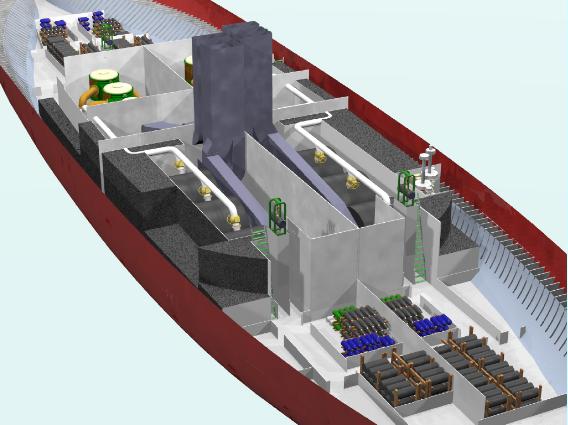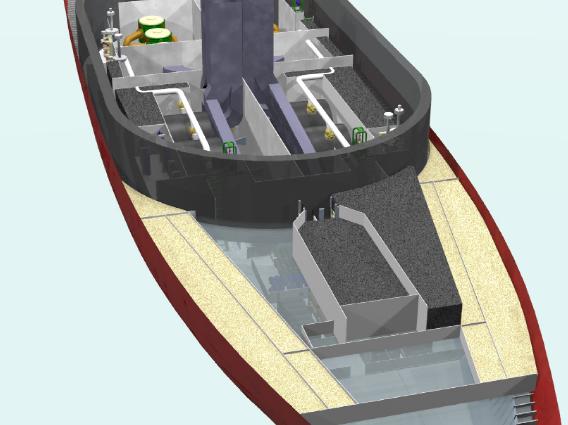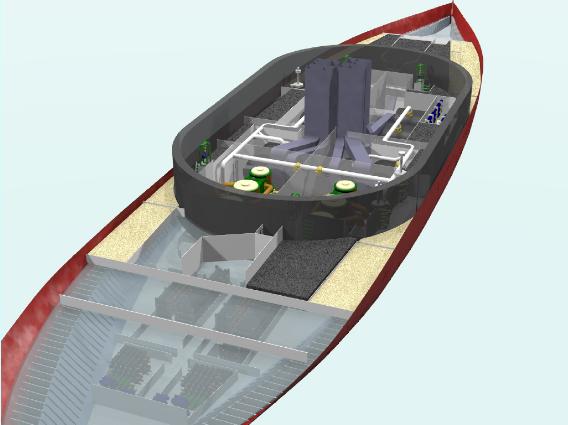| Home | Wiki | Docs | Sources | Contact |

| PROTECTION (3) |  |  |
The Raft Weight and displacement restrictions (and cost) prevented the whole of the side of the ship from being armoured. While the magazines and shell rooms were well below the waterline, they could have been vulnerable to the effects of a shell exploding in a deck above (or from plunging fire from shore batteries). Protection was therefore provided by an armoured deck, 2 to 3 inches thick, built above the lower deck, but still about five feet below the waterline. The compartments below this armoured deck and within the citadel were considered watertight and proof against enemy damage. While these compartments remained undamaged, the ship could remain afloat, even if the superstructure and decks above were well riddled. Further protection was provided by subdividing the spaces within this raft into watertight compartments. |
 |
||
 |
||
Note the torpedo body stowage compartment forward (on the right side of the image above) and the turning engines for the starboard turret inset into the coal bunkers abreast the starboard engine room. |
|
Now I've added in the main armour belt, made up of a layer of compound armour 18 inches thick, backed by a further 20 inches of teak in two layers. |
 |
||
Add the armoured decks forward. The wing compartments are filled with cork, or rope/oakum, to provide buoyancy if a shell penetrates and causes flooding. Centrally, and directly above the magazines and shell room were three coal bunkers. These provided the main coal storage for the ship as well as some additional protection, as 2 feet of coal was equivalent to an inch of armour plate. |
 |
||
On the after armoured deck above the magazines and shell rooms were three smaller coal bunkers flanked by wing compartments filled with cork. A point to note with the aft coal bunkers is that all the coal in them had to be manhandled through the starboard engine room and starboard aft boiler room. This implies that there were watertight doors connecting all the boiler rooms and engine rooms. In action, however, these doors would be shut and the boilers would be fed from the coal bunkers adjacent to the boilers themselves. |
 |
|||
 |  | ||
| (c) 2008 Rob Brassington, all rights reserved | |||